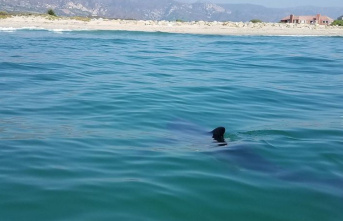The Basque biodiversity map has many highlights but also some shadows. This is the conclusion that emerges from the Environmental Profile of the Basque Country 2022 published annually by the public company Ihobe and which this year focuses on the variety of natural life in the three territories. On the positive side of the balance, it is striking that, with just under 1% of the territory of the European Union, the community is home to approximately 35% of the habitats of European interest, 21% of the species of fauna and 2 % of flora. On the downside, the state of bird populations in agricultural areas is in sharp decline when compared to data from the end of the last century.
The document, presented yesterday on the eve of World Biodiversity Day, which will be celebrated tomorrow under the slogan 'Building a shared future for all forms of life', addresses various issues such as the protected natural area, the state of conservation of species or Basque public investment in this matter. One of the main data it offers is that a quarter of the Basque Country – 175,330 hectares – is under some form of environmental protection, which places it “on the right track to reach the 30% figure set by the EU for the end of this decade”, they confirm from Ihobe.
The data regarding the presence of animal and plant species show that the populations of amphibians, reptiles and mammals, as well as birds that live in urban, high mountain and forest environments, are in good health. For example, a strong increase in butterflies has been detected in forest areas, the same as in the number of specimens of European shags, trout or gobies. Others such as the minnow —a small freshwater fish— and salmon have stabilized, while the eel continues to decline.
The populations of birds typical of agricultural areas also go backwards. "It has fallen 44% in the last decade and it is worrying," the report details. The ones that present the most alarming data are the tree sparrow and the western jackdaw, whose colonies are 93.4 and 99.4% smaller than in 1998. The Urdaibai Bird Center confirms this trend and adds two more species that are increasingly seen except in the Basque fields: the swallows and the shrikes. In the case of the former, they speak of population declines of up to 50% thanks above all to "the change in agricultural uses." “There are more chalets and fewer country houses, the use of pesticides and the disappearance of the bushes that used to serve as boundaries between farms is causing them to be seen very little or not at all in many areas,” says Edorta Unamuno, technical biologist from space. Precisely to draw attention to these delicate and necessary birds, which can eat up to 850 flies and mosquitoes a day, they have installed a webcam in two nests in the Urdaibai Biosphere Reserve and can be followed live at https:// www.birdcenter.org/en/aves/webcam-swallows
The Basque Country has been working since 2016 on an action plan to improve the Natural Heritage that "marks the way to achieve a resilient and responsible territory in which the state of conservation of the natural environment is improved". "The protection of biodiversity is one of the lines of work of the Euskadi Green Pact, its own roadmap that seeks to achieve fair and sustainable development", explain the authors of an environmental profile that also highlights the economic value and social nature of the territory.
7












